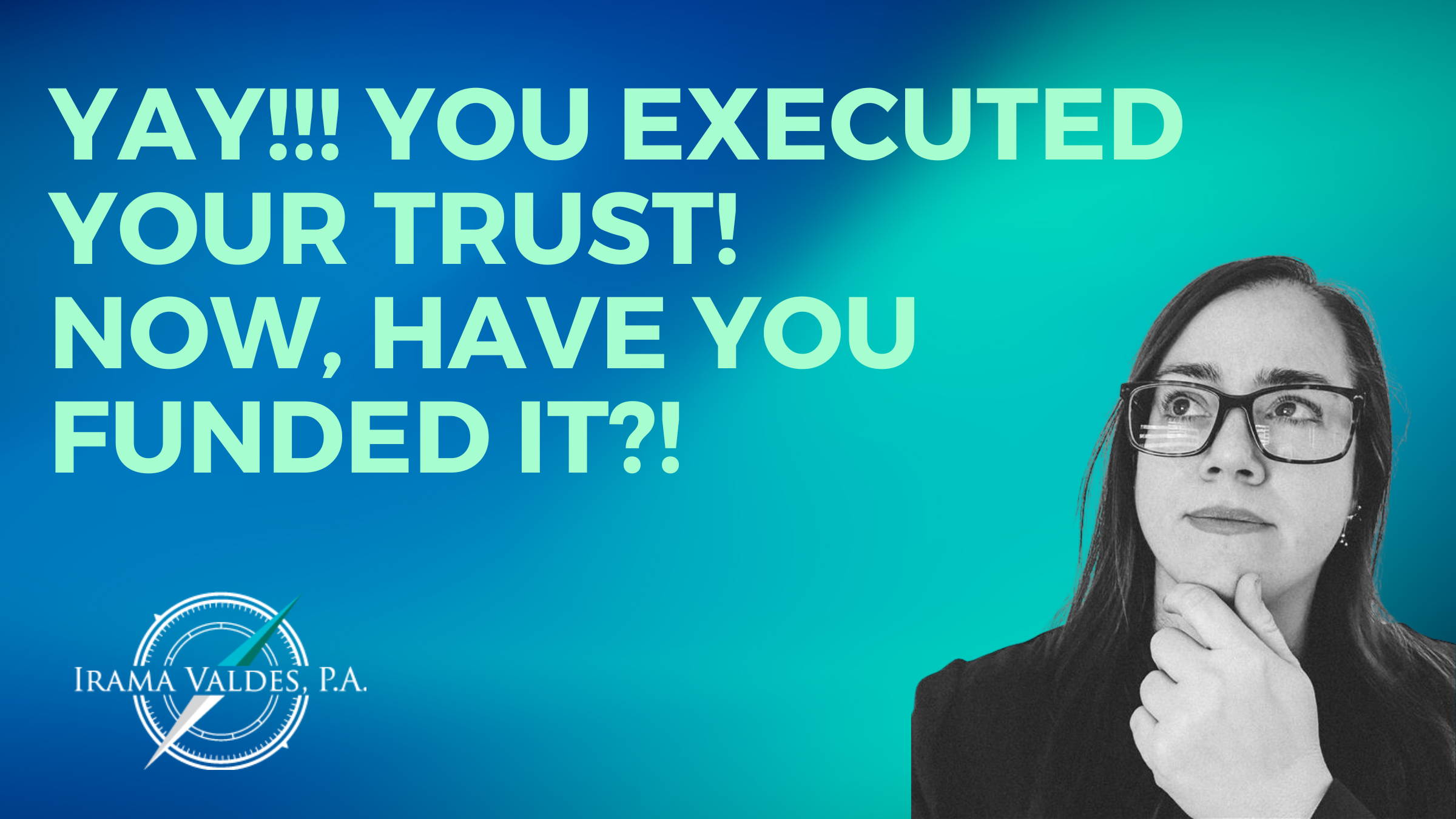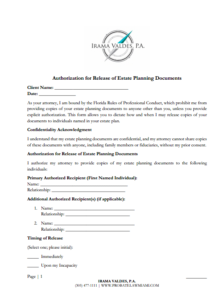Congratulations! You’ve taken a huge step in securing your legacy and protecting your loved ones by getting your trust done. But before you pat yourself on the back and tuck that binder away for safekeeping (I know… I’m sorry), there are a few more things you have to check off your list before I can set you free into the universe.
A trust is only as effective as the actions taken after it’s signed. Think of it as an empty house—you still need to add furniture, decor, and your stuff!
Here are the key next steps you should take after signing your trust (lawyer caveat time! remember that each family is different… to fully understand the exact steps you should take after executing your trust, sit down with your estate planning attorney. And also, all this info only applies in Florida):
✅ 1. Fund the Trust
Signing the trust is just the first step—now you need to transfer assets into the trust, and this is really THE most important step to avoid probate for those assets. This is what’s known as “funding” the trust. Common assets to transfer include:
-
Bank accounts: Update titles or create new accounts in the name of the trust. Some clients choose to add the trust as a “payable on death beneficiary” but you should know this creates an extra step for your successor trustee at the end of the day.
-
Real estate: Record a new deed transferring your property into the trust. This doesn’t apply to ALL properties as some properties could be used for investment and we often recommend other structuring tools like LLCs to hold those properties.
-
Investment accounts: Contact your financial advisor to retitle applicable accounts.
-
Business interests: Amend (or AHEM… CREATE) operating agreements or issue stock certificates if needed.
-
Personal property: Complete an assignment of interest for valuable items like jewelry, art, or vehicles (depending on your state).
If your assets aren’t in the trust, they may still go through probate—so this part is crucial!
✅ 2. Update Beneficiaries
Review all your retirement accounts, life insurance policies, and payable-on-death (POD) or transfer-on-death (TOD) accounts.
Make sure the beneficiaries listed align with your trust plan. In some cases, you may name your trust as the beneficiary, depending on your goals. Again, sorry for being repetitive, but asking your lawyer is key!
✅ 3. Review and Update Titles
Any asset that isn’t funded into the trust or coordinated through a beneficiary designation could create problems later. Work with your attorney or financial advisor to confirm which assets should be titled in the trust’s name—and which shouldn’t (but just because they shouldn’t now, doesn’t mean we don’t consider if they should be in the trust in the future).
✅ 4. Provide Key People with Copies
Your successor trustee needs to know you’ve named them—and ideally, have a copy of the trust or instructions on where to find it. You may also want to provide a copy to:
-
Your financial advisor
-
Your CPA or tax professional
-
Important people in your life
Keep a copy in a safe but accessible place (not a locked box that no one can open after you’re gone!). Also, we offer our clients the option of having us provide specific people with a copy based on certain circumstances by executing an Authorization Form. You know what, we will put it in here so you can download it and fill it out in case you haven’t already done so; just click on the picture below! (also, it’s not a static form… if you want to change the conditions to release documents or exclude certain documents, we can certainly do so):
✅ 5. Update Your Wealth and Assets Inventory
For our Level 3 Clients, we prepare a Wealth and Assets Inventory. This is a centralized spreadsheet with all of your assets, how they are titled, balances, account numbers, if applicable, and any other information regarding each asset that will assist your family in managing the trust upon your incapacity or death. If you did not sign up for Level 3 planning or did your trust elsewhere, it’s important to create a running list of what’s in your trust and update it regularly. This truly makes your trustee’s job so much easier when the time comes.
Here is a link to the spreadsheet we use to start this off: Wealth & Asset Inventory Spreadsheet
✅ 6. Set a Reminder for Review
Life changes—so should your plan. Set a reminder to review your trust every 3-5 years, or sooner if there’s a major life change like:
-
Marriage or divorce
-
Birth or death in the family
-
New job or retirement
-
Major asset purchases or sales
-
A move to another state
We often send clients a physical or digital reminder (or sometimes both) that says “HEY… HAS ANYTHING CHANGED?” Also, if there’s a substantive change in the law, it could mean requiring some adjustments! We send out newsletters monthly (or at least I try) and many times updates in the law will be included in those. If you are not signed up for our newsletters, enter your info in the form below to be added!
✅ 7. Tell Your Family You Created a Trust (if you can)
You don’t need to give them all the details, but letting them know you’ve done estate planning—and where to find your documents—can prevent a lot of confusion (AHEM: LITIGATION) down the road. And of course, if you feel comfortable giving details, it could also help set the appropriate expectations between your beneficiaries to help minimize the potential for litigation. If you’re like me, having a conversation with a 3 year old and 9 year old about their inheritance is as helpful as telling them to hurry up in the morning when I’m trying to get them out of the house and to their respective schools. BUT, I did leave a letter for each of them and a video recording so there’s no doubt what my intentions are about their future behavior (I WILL COME HAUNT THEM IF THEY FIGHT). As they grow, I will likely create new versions of the letters and videos but for now, this will do!
Bottom line: Your trust is a powerful tool, but it needs to be used and funded correctly. A little post-signing legwork now can save your loved ones years of stress (and additional attorneys fees and costs) later.
Also, check out our YouTube video covering this subject (the blog has more details but for those of you that want to see this in video format, here ya go)!









